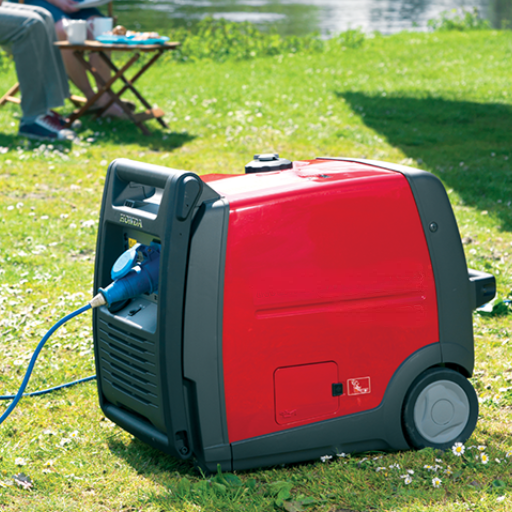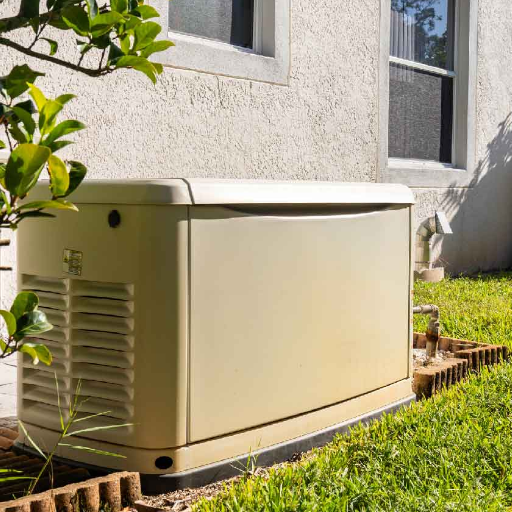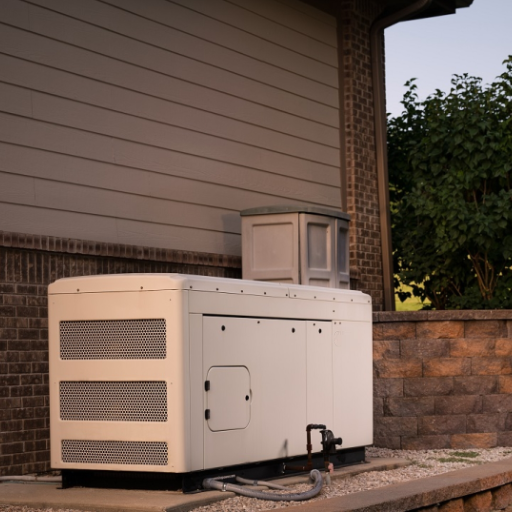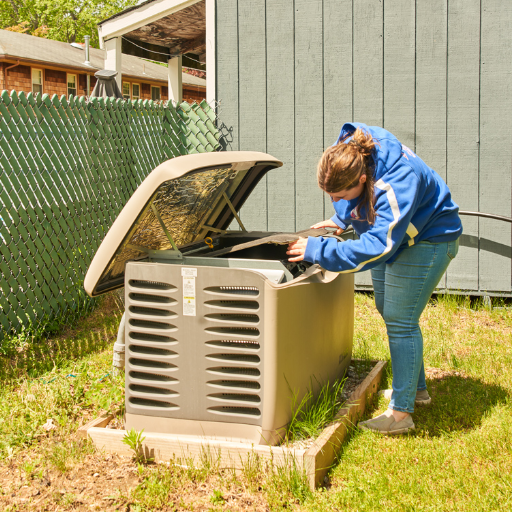In the context of commercial building operations, backup power is one of the most important tools to maintain continuous operations. Failure of electricity, whether it is due to a hurricane or other natural causes, due to a break in the power lines or as a result of a technical fault, is capable of causing heavy financial losses, holding important activities and compromising safety. This article will pay attention to some of the main things to remember when installing a generator in commercial estates, such as how to choose the right generator size and how to prevent fines from the local laws. As building managers and owners internalize these factors, they can effectively gather the necessary information they need to fix their facilities, and lost power will not cripple critical services.
Understanding of Commercial Generators
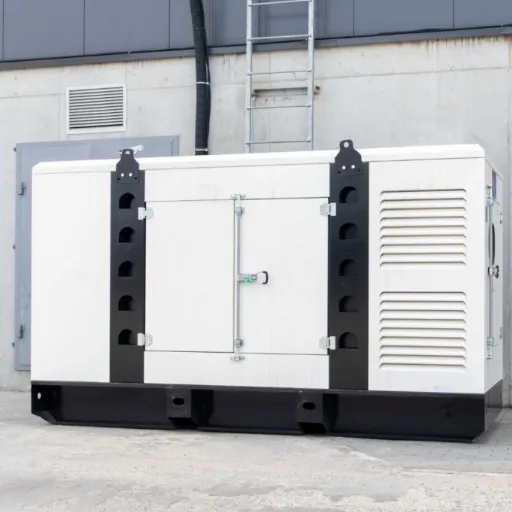
Business generators are these units, possessing high-quality features, and their scope is such that they back up the owners of the businesses and the owners of those big buildings as well, constructing some standard ones. These structures are characteristically mainly designed to run on diesel, natural gas, or alternatively propane. This well-fueled fuel supply adheres to architectural standards on the distribution of electricity to safe levels so that all critical users have energy to stabilize. The systems can sense power cuts and automatically start up to limit the time wasted, ensuring that crucial activities, such as illumination, are not interrupted. When selecting a generator, it is necessary to understand the amount of power in the given area, store, or facility to ensure that the relevant regulations and fuel efficiency are maintained.
Types of Commercial Generators
| Type of Generator | Power Source | Key Features | Best Use Cases |
|---|---|---|---|
| Diesel Generators | Diesel Fuel | High efficiency, durability, long lifespan | Industrial facilities, hospitals |
| Natural Gas Generators | Natural Gas | Cleaner emissions, cost-effective | Residential and commercial use |
| Propane Generators | Propane | Stable fuel storage, versatile application | Remote sites, backup power |
| Gasoline Generators | Gasoline | Portable, widely available fuel | Small residential or recreational use |
| Dual-Fuel Generators | Gasoline + Propane | Flexible fuel option, reduced fuel dependency | Versatile for emergencies and long use |
| Solar-Powered Generators | Solar Energy | Renewable energy, silent operation | Eco-friendly homes, outdoor use |
| Hydrogen Generators | Hydrogen Fuel | Low emissions, innovative technology | Emerging sectors, eco-conscious businesses |
| Standby Generators | Varies (Diesel/Natural Gas) | Automatic power backup, integrated with mains | Critical infrastructures, large buildings |
| Portable Generators | Gasoline/Propane | Compact, transportable, multi-purpose | Temporary outdoor or on-site use |
| Inverter Generators | Gasoline/Propane | Stable power, quieter operation | Electronics, sensitive equipment |
Benefits of Standby Generators
Automatic Power Restoration
Emergency energy supply systems (EES) or standby generators are unit installation facilities of such kind these have been made to switch to the condition of regular power utilization as soon as several seconds after the main power supply has been lost curing any downtime issues especially vital for negligent containment and back up of medical hospitals, server rooms especially those in data centers and big factories especially the power intensive factories.
Seamless Integration with Electrical Systems
These power sources are developed in such a way that they can easily be centered in the giving. This becomes very useful since when there is a failure from the main power source to attain the use of such backup systems, there are reduced chances of power spikes that could either spoil the delicate machinery in place or the networks that are part of the production structure.
High Power Capacity
Standby generators are large and comfortably provide strong and constant amount of energy that can support any huge operations. They are designed to produce a power output that begins from 7 kW and extends toward more than 150 kW. This makes them suitable for many applications, spanning from domestic use to those in industries especially when used for the purpose mentioned above.
Fuel Efficiency with Versatile Options
In relation to energy, standby generators have two important aspects to consider. The use of natural gas and diesel is possible with all such internal power sources offering high levels of efficiency, although natural gas is the most efficient. Even when compared to the diesel-powered ones, natural gas-based standby generators offer an enhanced form of energy, including little or no pollution, which is in line with nature conservation aims.
Enhanced Resilience for Critical Industries
Standby generators are used extensively in sectors such as health services, telecommunications, and public protection to avoid downtimes that would impair emergency response capability. Indeed, being able to protect critical supply lines in an infrastructure is pivotal for continuing operations in these industries.
Longevity and Durability
Designed for extreme conditions and working without a pause, standby generators have an estimated service life of 20-40 years when serviced in accordance with the instructions. Their longer tolerance contributes to their use for a considerable length of time in a positive cost-benefit analysis.
Role of Backup Generators in Power Outages
Back-up power systems are vital for mitigating the risks and losses stemming from power failures by providing an efficient alternative source of power throughout the situation. This could be either strained weather conditions, equipment breakdowns, or excessive consumption of power from the grid; systems are tasked to ensure deployment of back-up power sources almost immediately the main line fails. The more sophisticated the generator technology is, the better it’s able to handle a situation where an automatic transfer switch (ATS) capability enables smooth switch-over of line power to generator power within an acceptable duration or even with no downtime at all. It has also been estimated that businesses can have revenue losses of up to the hundreds of thousands to even millions of dollars, or more specifically, industrial and health facilities. Backup power systems prevent disturbance and help in continuing all business activities. In addition to that, these types of generators help to run the vital infrastructures such as water treatment, data centres, and basements in which beds are placed in case of emergencies, which clearly illustrates the critical factors of this equipment in the efforts to maintain security and productivity in crises.
Choosing the Right Generator

- Power Requirements: Calculate the wattage in important devices and electrical equipment to figure out your energy requirements. Consider a word of advice, which is to look at the wattage necessary for the beginning of the equipment compared to that of its operation for the purpose of maximum output power use.
- Fuel Type: A powerful tool for power is enclosed, providing information on the type of fuel most available for the proposed areas, including gasoline, diesel, gas, or propane. All these options have different availability, pricing, and storage issues in the relevant use.
- Generator Size: Procure the generator justified for the need. Baggage may shock the engines as tiny aggregates may fail when required. Oversized gen sets will fail to economise on fuel.
- Runtime and Efficiency: Time is referred to as the period during which the whole tank of fuel or energy can be burned. Fuel economy will minimize fuel, time and operating cost refueling interval.
- Portability or Installation: Depending on the application or the frequency of blackouts, select between standby generators and portable electrical generators for one-time instances.
- Noise Levels: Verify the manufacturer’s specified noise level to ensure that the noise output produced by the generator is in compliance, especially for mixed land use areas that may have noise ordinances.
In assessing these points, an appropriate generator will be chosen for both immediate and long-term needs.
Assessing Your Power Needs
To determine the exact amount of electricity needed to operate essential equipment when the main electricity grid fails, one should first calculate the total wattage of all critical systems and equipment. Each facility should have a list of the most important supplies that require electricity in case of a power outage; this list should include equipment ranging from refrigerators, heaters, and air conditioners to lights and medical equipment, along with the wattage of each item. Usually, such values are readily calculable as manufacturers of such appliances would tend to build them with important information, such as labels like the power ratings, as shown in a sample table detailed over the page. For equipment which has a power rating that exceeds the running or continuous power, make sure to also factor in the above-the-nominal or surge power in order to ensure the generator has enough capacity to cope with maximum loads. Finally, also think about whether you want single- or three-phase power, depending on the type of equipment. Private zones generally get single-phase power, while other establishments need the three-phase equivalent as it can handle high resistance. It is also good practice to allow for a 15-20% increase in watts capacity, as compared to the existing systems, to cover any anticipated temporary increases in load and to avoid causing the generator to overload.
Generator Sizing for Commercial Properties
When choosing a generator for a commercial installation, the critical nature of the calculation comes from the necessity for power to run permanently. Everything begins with the specification of the total electrical load needed for the facility. This implies that all items, lights, air conditioning, and other devices normally found in that building are assessed to know their total power demand in kilowatts (kW) or kilovoltamperes (kVA), considering both operational and transformer startings with engine-driven systems being given a special purpose. Such considerations include the need to recognize and analyze the factor of peak demand since, in most cases, power utilization is not uniform throughout the day and the different energy requirements opt for various time hours or even the seasonal elements. For example, their power ratings would rise during the summer on account of popular on-premise retail or commercial kitchen’s freezer units. Moreover, the power factor, which is a measure of how effectively electrical power is used, needs to be taken into account as well, since it affects the effective generator size you need to install.
Fuel Types: Diesel vs. Other Options
| Fuel Type | Advantages | Disadvantages | Best Use Cases |
|---|---|---|---|
| Diesel | High energy output, widely available | High emissions, noise, non-renewable | Large-scale, long-duration needs |
| Gasoline | Cost-effective for smaller generators | Lower efficiency, flammable, non-renewable | Portable and backup generators |
| Natural Gas | Clean burning, cost-effective | Requires pipeline, lower energy density | Continuous supply in urban areas |
| Propane | Long shelf life, clean burning | More expensive, storage infrastructure | Remote locations, eco-sensitive areas |
| Biodiesel | Renewable, lower emissions | Availability issues, higher cost | Green initiatives, sustainable projects |
| Hydrogen | Zero emissions, renewable | Expensive, infrastructure challenges | Experimental and future applications |
| Solar (PV) | Renewable, no emissions | Weather-dependent, high upfront cost | Off-grid systems, sunny locations |
| Wind | Completely renewable, no emissions | Weather variability, high initial cost | Wind-heavy, remote areas |
| Battery/Electric | Clean, quiet operation | Limited runtime, battery replacement cost | Short usage, noise-sensitive environments |
Commercial Generator Installation Best Practices
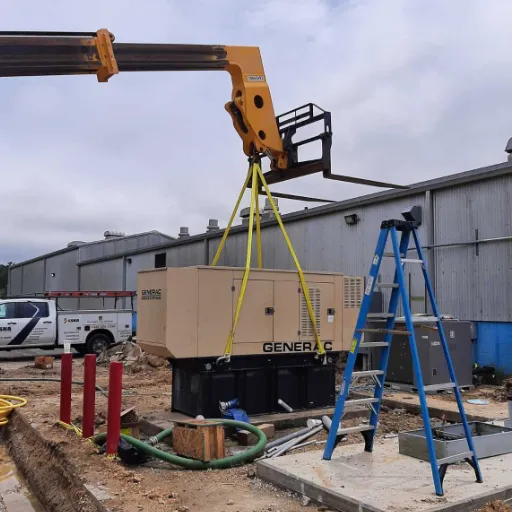
Site Assessment
Assess thoroughly the position of the intended site to install the generator. The land must be flat, well–irrigated, and meet all the required norms. Besides, one should also account for the distance to fuel sources and electrical boards for ease of operation and regular checks.
Load Assessment
Hands-on how to ascertain the load requirements of the proposed facility. Identify loads that will be included in the load estimate, along with their types. Ensure that the generator’s size and rating correspond to the most loaded and continuous transformer peak ratings as to avoid under-performing and over-loading.
Compliance with Regulations
To avoid any delays and potential financial losses during the installation process, ensure that all applicable building, planning, and fire laws, including local city regulations, are fully complied with. Proper permissions, including official authorization from the relevant governing authorities, as well as regular inspections, must also be observed.
Fuel Source and Storage
Select the correct fuel (i.e., diesel, natural gas, or propane) according to cost and availability. For other kinds of fuels like diesel, right storage and safety will be most appropriate to prevent fuel from spilling or getting contaminated.
Regular Maintenance Access
Make the engineering and installation acoustics friendly by arranging the infrastructure to allow future renovations or operations. Ensure that sufficient space is allocated in the design to facilitate easy maintenance tasks, including inspections, oil changes, filter replacements, and repairs.
Noise and Vibration Control
Application of mitigation measures, including installation of internal abatement systems such as silencers, should be considered especially in areas where there are buildings around, that are too loud or are in critical quiet zones of the project.
Site Assessment and Preparation
An inspection of the location is the most important preparation for completing the work efficiently. It is essential to conduct an examination to assess the site’s conditions, including the necessary requirements such as well-screened locations, soil levels, and air and environmental needs. Сonsider the landscape within the area to determine if any modifications such as filling, terracing, or shoring up will be necessary for the anticipated development. In addition, examine and assess the practicality, safety, and convenience of the transportation routes that will be used to transport all materials, attachments, and equipment to the site.
It is essential to take into account the climatic conditions of the locality, as geographical factors significantly affect any technological system used at the installed premises. Also, it is important to make sure that the structure complies with local and state regulations regarding land use i.e. confirm that the zoning laws and building codes are satisfied. And also, make the best use of the existing infrastructure, flat, and improved landscape through geographic information systems rather than a straight location. Such a systematic approach will help streamline the process in a manner that is positive and efficient for successful and sustainable project execution.
Proper Placement of the Generator
Where you put your generator is of supreme importance, as it can determine everything from overall effectiveness to safety and even efficiency levels. The last item must be installed in a manner that minimizes vibration. Further to this, should there be a floor or the equivalent, it should be non-combustible and capable of supporting the weight of the generator. If placed too close to a building, emissions and noise can be problems. Thankfully, building codes have sufficient details to give guidance on the minimum setback requirements between the generator and the building. Placement should be confirmed through studies on the airflow channels and exhaust from the generator to ensure that no hazardous gases are produced in the immediate environment.
In addition to the above points, determining the accessibility of replacement parts and fuel, protection against harsh weather conditions, and the closeness to the point where the electricity generated reaches end users is also essential. According to evidence-based information, the installation of ventilated (shrouded) gensets can help avoid unfavorable operating conditions and extend the lifetime of the gensets by protecting them from extremely hot and cold temperature conditions and wear as much as possible. Second, modern technologies of cartography support with an assurance of what the right position within the cooling distribution grid is without having the wires distributed everywhere. These issues of safety, as regards site planning, are not anybody’s concern and can be well enhanced.
Maintenance and Compliance

To ensure generators perform reliably, it is essential to follow the maintenance practices stipulated by the manufacturers. It should be noted that there are certain tasks that typically require attention, which may include: examining and replacing filters, checking for appropriate oil and antifreeze levels, examining the fuel system for leaks, and looking over the battery condition. It is not just following the guidelines that ensures the performance, but maintenance is even more important as performing these functions at their own times will help the equipments to survive for a longer period without wearing out. However, it follows that one needs to be in compliance with the local, state and federal laws. This scope includes keeping records of examinations and repairs, emission testing (as applicable) and also securing the proper level of noise with the environment. Actions that violate the law can result in reprimands, fines, and other penalties, and can lead to a halt in operations. For this reason, monitoring changes to regulations is indispensable.
Routine Inspections and Servicing Schedules
Without a doubt, routine inspections, in addition to the servicing schedule, are considered critical for the utmost efficiency and safety of machinery and equipment, as well as regulatory compliance. It is of vital importance, as part of best practice, to visually inspect the equipment daily to identify any immediate or long-term threats, such as leaks, worn-out, or damaged parts, among others. Weekly checks can be more stringent, including checking fluid levels, understanding air pressure, and cross-inspecting wiring. Relevantly, monthly servicing ought to be considerate of what can be done to avoid breakdown i.e., lubricating moving elements, calibrating sensors and joint replacement components that are worn out or otherwise defective.
It’s difficult to overestimate the significance of modern diagnostic methods in various industrial sectors. These include, specifically, the application of vibration analysis, thermal imaging, and real-time monitoring, which allow tracking the state of equipment. Through the use of such modern knowledge, maintenance teams are able to foresee and predict possible equipment malfunctions, assess equipment wear and tear, and schedule work in a way that avoids machinery breakdown. It is equally important to follow the prescribed intervals, which are in line with the respective machinery manufacturers’ guidelines, so that repairs are conducted under warranty without affecting the overall equipment efficiency. By structured data storage and adherence to those procedures, organizations will enjoy better operational continuity and less overhead expenses over the life cycle of their assets.
Understanding Safety Standards and Regulations
Conforming to stipulated health and safety rules is quite fundamental for the sake of averting any safety concerns within the company, compliance with the law as well as proper working efficiency. These particular principles, which are imposed mainly by certain bodies, for instance, the Occupational Safety and Health Administration, the International Standards Organization, or any other that is strategic for the operation, describe in full the categories of hazards, safety precautions, as well as measures for protecting the employees adequately. In essence, very few situations engage in any explanation where there is heavy equipment in operational condition likely to cause injuries, with little doubt, lockout/tagout (LOTO) is essential so that no accidental discharge from any equipment located therein might occur due to maintenance. Similarly, the equipment hazards from which personal protective equipment (PPE) is required are all specified; one may also factor in negative implications due to chemicals or high noise, in which case earplugs may be necessary.
An equally significant necessity is being informed about current improvements or changes made to these regulations, as they promote the merger of technology and reflect any new findings. To adhere to these audits, education and supportive files are the prime steps to take for compliance. Employers who go further to incorporate these principles in their day-to-day operations not only enhance the safety but also create a safe culture, thereby reducing potential suits in case of injuries and promoting employee health.
Challenges in Installing a Generator

It is not surprising that the major challenge for an individual seeking a new generator is determining the appropriate capacity to meet the power requirements of the equipment, thereby avoiding both underutilization and overloading, which is why the alternator is necessary. It would also be safe to say that finding the perfect place for the generator is also a major challenge because not only does it fall under the established rules of proper system servicing, but also some adverse failure effects might occur.
Overcrowding presents another problem that many data center owners or operators may encounter. This relates to the fact that as technologies continue to increase, the space occupied by new devices in data centers is filling up quickly, leaving very little space for upgrades. It is also necessary to provide for the allocation and correction of infrastructure floors for the electric field of that D.C. equipment with a nature floor limit, as observed for all objects of electrical category IV. Reach analysis of the essential strategies to for this situation, and consult applicable stakeholders.
Dealing with Space Constraints
Working towards density also requires a measured approach to achieving the floor functions of the layout under height constraints and evaluating the regulatory standard. A mix of density and efficiency, such as the modular structure, provides a workable option for reducing space. For example, design changes such as vertical integration or wall-mounted equipment are particularly useful in spaces with limited available space. Moreover, improving design and making technological changes make it easier and cheaper to design ventilation systems that occupy less space and are more efficient. Every specific design requires a detailed site inspection that would help in discerning any possible moves from the normal arrangements so that they do not obstruct the air patterns, maintenance and safety regulations. All this can be improved with some clever changes and an appropriate strategy in urban planning, even in places where it is impossible to have effective and safe systems within the area.
Minimizing Downtime During Installation
Ensuring the operational downtime is at its minimum level during the installation is key in achieving maximum productivity as well as avoid any financial losses. Organization and having the ability to plan well are the two most essential components in ensuring that this aim is achieved. Identifying risks and challenges through pre-installation assessments aids in putting in place proactive measures. The use of modular components and plug-and-play systems is also a mechanism that contributes towards shortened installation times as they do away the need for on-site assembly and putting into operation of the entire system.
Furthermore, the inclusion of uncontrolled deployment schemes will ensure the coexistence of portions of the system while advancements or exchanges are carried out in other sections. Engineers, contractors, and operational managers should work closely together to implement such changes and make necessary adjustments to timelines. The utilization of modern techniques and equipment, such as data analytics and remote monitoring, presents several advantages during the installation phase, most notably the ability to diagnose issues promptly, respond effectively, and minimize them. These strategies keep up the efficiency by not only protecting the system’s performance but also the business’s smooth operations in the process.
Overcoming Technical Complexities
To properly address technical complexities requires a holistic approach that embraces the inherent challenges of the system, including the environmental parameters affecting its function. Today, technology has at its disposal the most advanced simulation models and predictive algorithms, which greatly aid in preventing potential failures and enabling optimal performance. For example, a study involving the exploitation of FEA theory should inform us of the surrounding particular elements of structure under operating conditions, and the use of CFD must involve a careful spatial distribution of cell mesh in the form of a velocity field analysis. Moreover, the appropriability of methods of machine learning allows for the increase of efficiency in solving tasks with the understanding that the system will change and adapt to new conditions. The use of these advanced tools alongside a cycle of learning and feedback provides a comprehensive response from a company to minimize risks, improve the quality, and promote change involving solving sophisticated technical issues.
Reference Sources
1. Identification of Hazards and Risk Assessment for a 40kVA Diesel Powered Lighting Set
- Key Findings: This study identifies occupational hazards and risks associated with the installation, operation, and maintenance of diesel-powered generators. It highlights five major tasks linked to industrial standby generator events and the varying degrees of hazards associated with each.
2. Project of a Pilot-Microgrid Connected to the Main Grid
- Key Findings: This paper discusses the development of a pilot microgrid integrating wind and solar photovoltaic resources with a control system for energy management. It emphasizes benefits like reduced transmission costs, energy supply reliability, and environmental impact reduction.
Frequently Asked Questions (FAQs)
Q: What are the benefits of installing a commercial generator for emergency power?
A: Having a commercial generator installed for auxiliary power sources helps to ensure power continuity during emergencies and so facilitates continuous business operations. They are utilized to provide standby power within just 10 seconds of the occurrence of a power failure, thus doing away with any disruption that would arise. Unlike domestic or industrial generators, these ones are built to offer power to large buildings, ensuring that all critical assets are working as expected. In addition to all the listed advantages, it is important to mention that a common sense code generator can help improve the image of a company because it shows that the features the business service continuity is working. Finally, they can play a big role when it comes to adhering with the laws and regulations in their geographical zone, whereby more emphasis is focused on the application of the local codes during disasters.
Q: How does a standby generator work for commercial facilities?
A: A standby generator functions by first detecting a complete absence of electricity and then integrating a backup power supply to the facility through an automatic changeover system. In this manner, power supply in critical industries and facilities is sustainable even when power loss occurs. The Standby generators, as opposed to the standby power supplies, are engineered to serve the essential functions such as lighting, HVAC, and refrigeration, thus allowing the commercial establishments to proceed with their daily operations. Most times, these are installed with a gas manifold system to enhance their operational efficiency. In general, the standby generator is such a system that one would not wish to leave out in any building where electricity is the main source of power.
Q: What types of emergency commercial generators are available?
A: There is quite a variety of commercial emergency generator set types; each has its own modification & purpose. These consist of, but not restricted to diesel generators, which are of high quality and industry best standard, and natural gas generators, which are environmentally healthy energy. Business owners greatly welcome commercial standby generators for the automatic working system when they are faced with blackouts, whereas larger facilities with huge power operations generally go for additional standby backup generator installations. Knowing the various emergency power solutions in place enables you to make an informed choice and pick the most appropriate generator for your business, irrespective of the situation.
Q: How can I ensure my commercial generator installation is successful?
A: One tip that is important for its installation in any business commercial premises of a generator, if supportive results may be achieved when people specifically install these complicated devices. So, the Invention of these experts’ recommendations will complement the good generator size to use, as well as when and how to require the generator for the business’s specific power usage, must be within the minds of all business people. It is also imperative to ensure that health and safety norms are adhered to during the installation. Remember as well, that the generator will need to be serviced at regular intervals if it is to last for any appreciable period. And last but most importantly, check the malfunction of the generator on a regular basis to verify that it is functioning well during incomplete or complete power outages on all occasions, allowing ease in reliance on the all-in-one energy source, which is the emergency backup system featuring generator.



